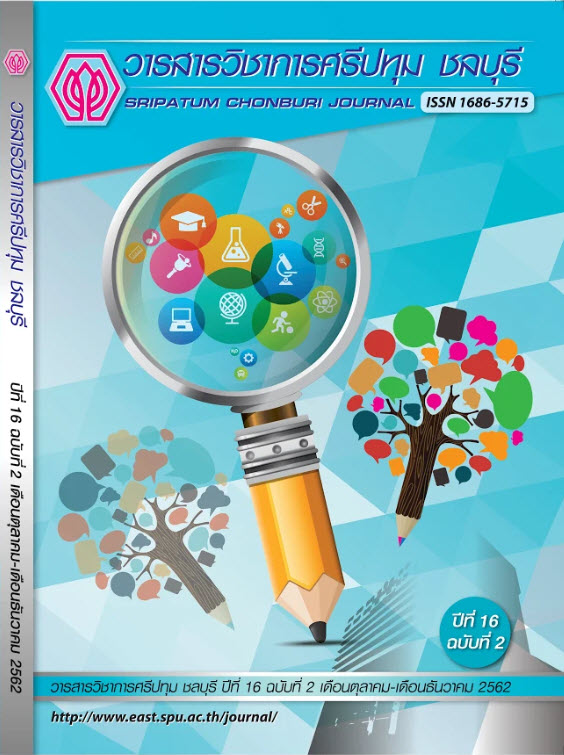EMPLOYEES’ QUALITY OF WORK LIFE IN BANGKOK, THAILAND
Keywords:
quality management, quality of work life, Thailand office employeeAbstract
This research aimed to study the quality of work life of office employees working in Bangkok, classified by the demographic characteristics of employees to understand the various factors that affect the quality of work life of employees. These results can be used in the future to design proper activities or processes that would enhance the quality of work life of employees within the organization. The research used non-probability sampling that is an accidental sampling technique from 400 samples and analyses the results with analysis of variance: ANOVA. It was found that employees with different gender, marital status, educational level and average monthly revenue have different quality of work life. which were statistically significant while the quality of work life of employees with different ages and duration of employment are not different.
References
Behzad, I., Arezo, K., & Mohammadi, N. (2014). Association between quality of work life and occupational stresses in personnel of social security organization in Hamadan Province, IR Iran. Journal Medical Research, 3(4), pp. 42-45.
Cochran, W. G. (1953). Sampling techiques. New York, NY: John Wiley & Sons.
Daskalova, N. (2009). Gender differences in quality of work and life; Institute for Social and Trade Union Research (Online). Available: http://www.eurofound.europa.eu/observatories/eurwork/
articles/quality-of-life/gender-differences-in-quality-of-work-and-life [2016, January 7].
Edgar, F., & Geare, A. (2004). Employee demographics in human resource management research. Research and Practices in Human Resource Management, 12(1), pp. 61-91.
Gupta, B. (2015). An empirical study of impact of demographic variables on quality of work life among insurance sector employees in indore division. Pacific Business Review International. 8(1), pp. 24-32.
Gurudatt, K., & Gazal, Y. (2015). Role of (QWL) quality of work life on employee retention in private
sector companies. International Journal of Engineering and Management Sciences, 6(1), pp.
11-15.
Jayakumar, A., & Kalaiselvi, K. (2012). Quality of work life - An overview. International Journal of
Marketing, Finance Services & Management Research, 1(10), pp. 140-151.
Jyothi, P., & Neelakantan, S. (2014). Quality of work life and academic dual - career couples. IOSR
Journal of Business and Management, 16(1), pp. 62-66.
Marimuthu, M., Arokiasamy, L., & Ismail, M. (2009). Human capital development and its impact on
firm performance: Evidence from developmental economics. The Journal of International
Social Research, 2(8), pp. 265-272.
Murugan, T. (2012). A study on quality of work life and job satisfaction of employees in Salem Steel
Plant, Salem. International Journal of Physical and Social Sciences, 2(4), pp. 331-355.
Nanjundeswaraswamy, T. S., & Swamy, D. R. (2014). Relationship between quality of work life and
demographical characteristics of SMEs employees. Pak. J. eng. Technol. Science, 4(2), pp.
125-144.
_______. (2015). An empirical research on the relationship between quality of work life and leadership style in SMEs. Bangladesh e-Journal of Sociology, 12(1), pp. 41-52.
Selvaraj, S. N. (2014). A study on review of quality of work life on employee retention in private companies. International Journal of Social Science and Humanities Research, 2(3), pp. 277-281.
Sojka, L. (2014). Specification of the quality of work life characteristics in the Slovak economic environment. Sociológia, 46(3), pp. 283-299.
Srivastava, S., & Kanpur, R. (2014). A study on quality of work life: Key elements & it’s implications.
Journal of Business and Management, 16(3), pp. 54-59.
Stein, Barry A. (1983). Quality of work life in action: Managing for effectiveness. New York, NY: Amacom Books.
Subhashini, S., & Gopal, C. S. Ramani. (2013). Quality of work life among women employees working in garment factories in Coimbatore district. Asia Pacific Journal of Research, 1(12), pp. 22-29.
Swanson, R. A., & Holton, E. F. (2009). Foundations of human resource development. San Francisco, CA: Berrett-Koehler.
Swapna, M. (2015). Quality of work life metrics as a predictor of job satisfaction and organizational commitment: A study with special reference to information technology industry. Mediterranean Journal of Social Sciences, 6(3), pp. 170-176.
Urosevic, S., & Milijic, N. (2012). Influence of demographic factors on employee satisfaction and motivation. Organiacija, 45(4), pp. 174-182.
Varghese, S., & Jayan, C. (2015). Quality of work life: A dynamic multidimensional construct at work
place part II. Guru Journal of Behavioral and Social Sciences, 1(2), pp. 91-104.
Walton, Richard E. (1974). Improving quality of work life. Harvard Business Review, 15(5), pp. 12-16.
Downloads
Published
Issue
Section
License
บทความทุกบทความเป็นลิขสิทธิ์ของวารสารวิชาการศรีปทุม ชลบุรี



